-
 Bitcoin
Bitcoin $84,597.5330
-0.49% -
 Ethereum
Ethereum $1,592.6457
0.50% -
 Tether USDt
Tether USDt $0.9997
-0.04% -
 XRP
XRP $2.0831
0.50% -
 BNB
BNB $592.9768
0.24% -
 Solana
Solana $134.1302
0.29% -
 USDC
USDC $1.0000
0.00% -
 Dogecoin
Dogecoin $0.1580
0.63% -
 TRON
TRON $0.2414
-2.84% -
 Cardano
Cardano $0.6275
1.03% -
 UNUS SED LEO
UNUS SED LEO $9.2362
1.75% -
 Chainlink
Chainlink $12.6306
0.88% -
 Avalanche
Avalanche $19.1583
0.21% -
 Toncoin
Toncoin $3.0109
1.48% -
 Stellar
Stellar $0.2413
0.54% -
 Shiba Inu
Shiba Inu $0.0...01224
3.82% -
 Hedera
Hedera $0.1658
1.35% -
 Sui
Sui $2.1452
0.62% -
 Bitcoin Cash
Bitcoin Cash $342.2668
1.13% -
 Polkadot
Polkadot $3.6976
1.53% -
 Litecoin
Litecoin $76.4913
1.60% -
 Hyperliquid
Hyperliquid $16.7875
1.11% -
 Dai
Dai $1.0000
-0.02% -
 Bitget Token
Bitget Token $4.3955
0.75% -
 Ethena USDe
Ethena USDe $0.9993
0.00% -
 Pi
Pi $0.6200
1.39% -
 Monero
Monero $216.3958
0.03% -
 Uniswap
Uniswap $5.1881
-0.10% -
 Pepe
Pepe $0.0...07265
-0.02% -
 OKB
OKB $50.5426
-0.14%
What is Near Data Availability for blockchain?
NDA ensures data for transaction validation is accessible to nodes, enhancing blockchain efficiency and scalability through sharding and off-chain storage.
Apr 12, 2025 at 10:00 am
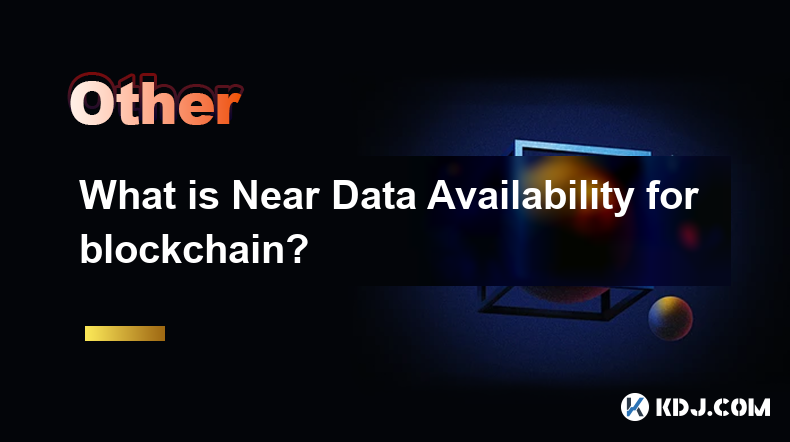
Near Data Availability (NDA) is a crucial concept in the realm of blockchain technology, particularly for scaling solutions. NDA refers to a mechanism that ensures data required for the validation and execution of transactions is readily accessible to nodes on the network. This concept is vital for maintaining the integrity and efficiency of a blockchain network, especially as the network scales and the volume of data increases.
The Importance of Near Data Availability in Blockchain
In blockchain networks, every node needs to validate transactions and maintain a copy of the ledger. As the network grows, the amount of data that needs to be processed and stored can become overwhelming. NDA helps in ensuring that this data is available in a timely manner, thus preventing delays and enhancing the overall performance of the network. Without efficient data availability mechanisms, the network could suffer from slow transaction processing times and increased latency, which can deter users and limit the blockchain's scalability.
How Near Data Availability Works
NDA operates through several mechanisms designed to ensure data is both accessible and verifiable. One common approach is the use of sharding, where the blockchain is divided into smaller, more manageable pieces called shards. Each shard processes its own set of transactions and maintains its own data, but all shards are interconnected and can share data when necessary. This allows nodes to access the data they need without having to process the entire blockchain.
Another method involves the use of off-chain storage solutions. These solutions store data outside of the main blockchain but ensure it is accessible when needed. For instance, data can be stored on decentralized storage networks like IPFS (InterPlanetary File System), and pointers to this data can be kept on the blockchain. This approach reduces the load on the blockchain while ensuring data availability.
Implementing Near Data Availability
Implementing NDA in a blockchain network involves several steps and considerations. Here's how it can be done:
- Assess the current network architecture: Understand the existing infrastructure and identify bottlenecks in data availability.
- Choose a suitable sharding strategy: Decide on the number of shards and how data will be distributed among them.
- Integrate off-chain storage solutions: Select a reliable off-chain storage system and ensure it is compatible with the blockchain network.
- Develop data retrieval mechanisms: Create efficient protocols for nodes to access data from shards or off-chain storage.
- Test and optimize: Conduct thorough testing to ensure data is available when needed and optimize the system based on performance metrics.
Benefits of Near Data Availability
Implementing NDA offers several advantages for blockchain networks. Firstly, it significantly improves transaction processing times. By ensuring data is readily available, nodes can validate transactions more quickly, leading to faster confirmation times. Secondly, NDA enhances the scalability of the network. As the network grows, the ability to efficiently manage and access data becomes crucial, and NDA helps in maintaining performance even as the network scales.
Additionally, NDA can lead to reduced storage requirements for nodes. By utilizing off-chain storage and sharding, nodes do not need to store the entire blockchain, which can be particularly beneficial for devices with limited storage capacity. Lastly, NDA improves the overall user experience. Faster transaction times and a more scalable network can attract more users and increase the adoption of the blockchain.
Challenges and Considerations
While NDA offers numerous benefits, it also comes with its own set of challenges. One major challenge is maintaining data integrity and security. When data is stored off-chain or in shards, ensuring that it remains tamper-proof and verifiable is crucial. This requires robust cryptographic techniques and consensus mechanisms.
Another consideration is the complexity of implementation. Integrating NDA into an existing blockchain network can be a complex task, requiring significant development and testing efforts. It's important to carefully plan and execute the implementation to avoid disrupting the network's operations.
Interoperability is also a key concern. As different blockchain networks may implement NDA in different ways, ensuring that these networks can communicate and share data effectively is essential. This may require the development of standardized protocols and interfaces.
Examples of Near Data Availability in Action
Several blockchain projects have already implemented NDA to enhance their networks. One notable example is the Ethereum 2.0 upgrade, which includes sharding as a key component. By dividing the Ethereum network into multiple shards, Ethereum aims to improve its scalability and transaction processing capabilities.
Another example is the NEAR Protocol, which uses a unique approach to data availability. NEAR employs a technique called "state sync," which allows new nodes to quickly catch up with the current state of the network without downloading the entire blockchain. This approach significantly reduces the time and resources required for nodes to join the network.
Frequently Asked Questions
Q: How does Near Data Availability impact the cost of running a node on a blockchain network?
A: NDA can reduce the cost of running a node by minimizing the amount of data that needs to be stored and processed. By using off-chain storage and sharding, nodes can operate with less storage capacity and lower computational requirements, which can lead to cost savings.
Q: Can Near Data Availability be retrofitted into an existing blockchain network?
A: Yes, NDA can be integrated into an existing blockchain network, but it requires careful planning and execution. The network's architecture and consensus mechanisms need to be assessed, and the implementation should be tested thoroughly to ensure it does not disrupt existing operations.
Q: What are the potential risks associated with off-chain data storage in the context of Near Data Availability?
A: One of the main risks is data security. When data is stored off-chain, it must be protected against unauthorized access and tampering. Additionally, there is a risk of data loss if the off-chain storage system fails, which could impact the integrity of the blockchain.
Q: How does Near Data Availability affect the decentralization of a blockchain network?
A: NDA can potentially enhance decentralization by making it easier for more nodes to join and participate in the network. By reducing the storage and processing requirements, more devices can run nodes, leading to a more decentralized network. However, the implementation of NDA must be carefully managed to ensure it does not inadvertently centralize control over data.
Disclaimer:info@kdj.com
The information provided is not trading advice. kdj.com does not assume any responsibility for any investments made based on the information provided in this article. Cryptocurrencies are highly volatile and it is highly recommended that you invest with caution after thorough research!
If you believe that the content used on this website infringes your copyright, please contact us immediately (info@kdj.com) and we will delete it promptly.
- South Korea kicked off 2025 with political chaos, regulatory heat and a crypto market finally brought to heel
- 2025-04-19 04:20:12
- BetMGM Bonus Code CUSE150 Gives New Users a "Bet $10, Get $150 if you Win" Deal
- 2025-04-19 04:20:12
- Davinci Jeremie, a long-time Bitcoin advocate, has reaffirmed his belief that Bitcoin will ultimately outperform XRP
- 2025-04-19 04:15:16
- BYDFi Launches MoonX, a New Web3 Product Targeting MemeCoin Investors
- 2025-04-19 04:15:16
- The popular alternative cryptocurrency Solana (SOL), which has emerged as one of the hottest assets on the market in recent months, may be on the verge of a painful downtrend against its main counterpart, Bitcoin.
- 2025-04-19 04:15:14
- BlockDAG (BDAG) Teams Up with HackerEarth to Launch Global Hackathons Aimed at Attracting Developers
- 2025-04-19 04:15:14
Related knowledge
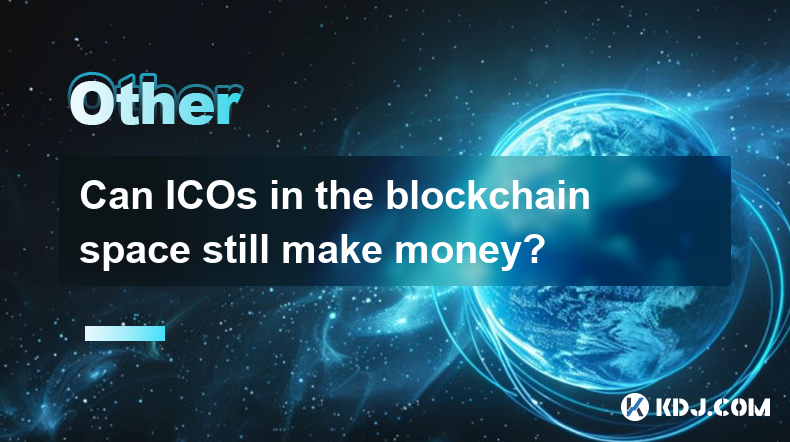
Can ICOs in the blockchain space still make money?
Apr 17,2025 at 08:29pm
The landscape of Initial Coin Offerings (ICOs) in the blockchain space has evolved significantly since their peak in 2017 and 2018. Despite the increased regulatory scrutiny and the rise of alternative fundraising methods like Security Token Offerings (STOs) and Initial Exchange Offerings (IEOs), ICOs can still be a viable way to raise funds and generat...

Can the application of blockchain in supply chain finance bring benefits?
Apr 15,2025 at 04:00pm
Can the application of blockchain in supply chain finance bring benefits? The integration of blockchain technology into supply chain finance has garnered significant attention in the cryptocurrency and financial sectors. This article explores how blockchain can potentially revolutionize supply chain finance, detailing its benefits and providing a compre...
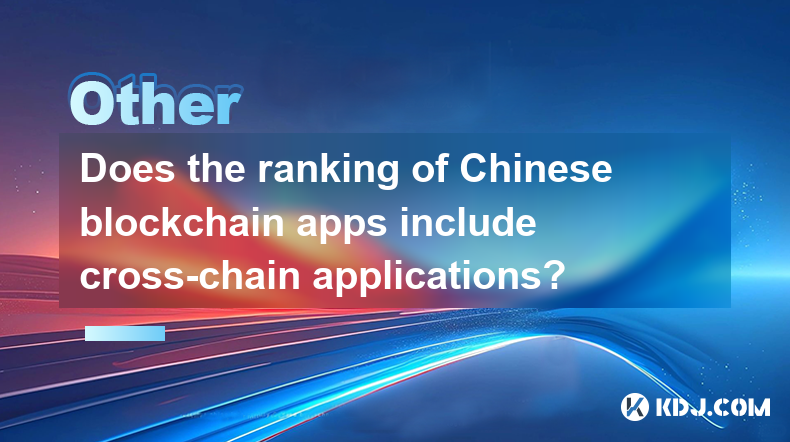
Does the ranking of Chinese blockchain apps include cross-chain applications?
Apr 14,2025 at 04:00pm
The ranking of Chinese blockchain apps is a comprehensive evaluation that takes into account various aspects such as user base, transaction volume, and technological innovation. A pertinent question arises regarding whether these rankings include cross-chain applications. Cross-chain applications, which allow different blockchain networks to interact an...
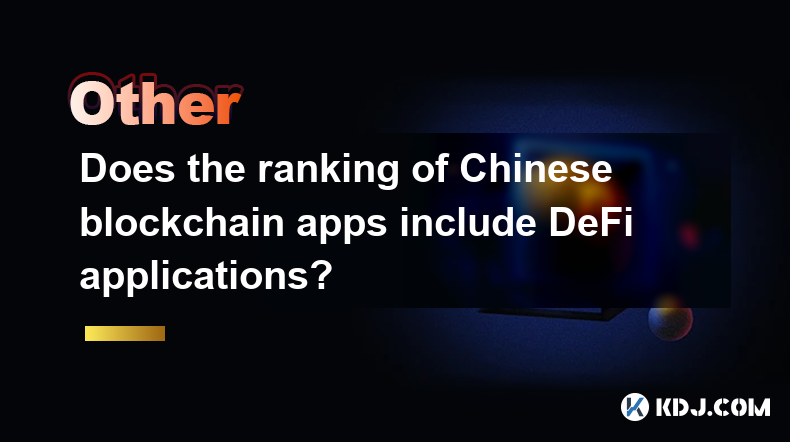
Does the ranking of Chinese blockchain apps include DeFi applications?
Apr 15,2025 at 06:57am
The ranking of Chinese blockchain apps is a comprehensive list that showcases the most popular and influential applications within the cryptocurrency ecosystem. One question that often arises is whether these rankings include DeFi applications. To answer this, we need to delve into the specifics of how these rankings are compiled and what types of appli...
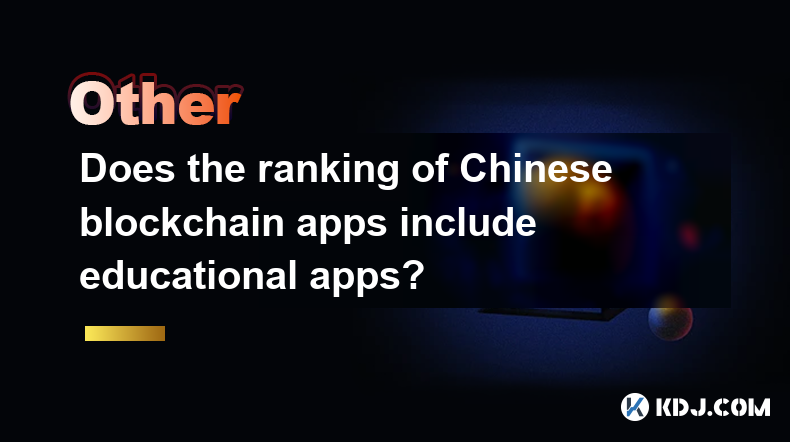
Does the ranking of Chinese blockchain apps include educational apps?
Apr 16,2025 at 03:35am
The ranking of Chinese blockchain apps often includes a variety of categories, from finance and gaming to social networking and beyond. One question that frequently arises is whether these rankings include educational apps. To address this, we need to delve into the specifics of how blockchain apps are categorized and ranked in China, and whether educat...
Does the ranking of Chinese blockchain apps include enterprise-level applications?
Apr 15,2025 at 06:42am
The ranking of Chinese blockchain apps often includes a variety of applications, ranging from consumer-focused to enterprise-level solutions. Understanding the scope and criteria for these rankings is essential to determine if enterprise-level applications are included. This article delves into the specifics of how Chinese blockchain app rankings are co...

Can ICOs in the blockchain space still make money?
Apr 17,2025 at 08:29pm
The landscape of Initial Coin Offerings (ICOs) in the blockchain space has evolved significantly since their peak in 2017 and 2018. Despite the increased regulatory scrutiny and the rise of alternative fundraising methods like Security Token Offerings (STOs) and Initial Exchange Offerings (IEOs), ICOs can still be a viable way to raise funds and generat...

Can the application of blockchain in supply chain finance bring benefits?
Apr 15,2025 at 04:00pm
Can the application of blockchain in supply chain finance bring benefits? The integration of blockchain technology into supply chain finance has garnered significant attention in the cryptocurrency and financial sectors. This article explores how blockchain can potentially revolutionize supply chain finance, detailing its benefits and providing a compre...

Does the ranking of Chinese blockchain apps include cross-chain applications?
Apr 14,2025 at 04:00pm
The ranking of Chinese blockchain apps is a comprehensive evaluation that takes into account various aspects such as user base, transaction volume, and technological innovation. A pertinent question arises regarding whether these rankings include cross-chain applications. Cross-chain applications, which allow different blockchain networks to interact an...

Does the ranking of Chinese blockchain apps include DeFi applications?
Apr 15,2025 at 06:57am
The ranking of Chinese blockchain apps is a comprehensive list that showcases the most popular and influential applications within the cryptocurrency ecosystem. One question that often arises is whether these rankings include DeFi applications. To answer this, we need to delve into the specifics of how these rankings are compiled and what types of appli...

Does the ranking of Chinese blockchain apps include educational apps?
Apr 16,2025 at 03:35am
The ranking of Chinese blockchain apps often includes a variety of categories, from finance and gaming to social networking and beyond. One question that frequently arises is whether these rankings include educational apps. To address this, we need to delve into the specifics of how blockchain apps are categorized and ranked in China, and whether educat...

Does the ranking of Chinese blockchain apps include enterprise-level applications?
Apr 15,2025 at 06:42am
The ranking of Chinese blockchain apps often includes a variety of applications, ranging from consumer-focused to enterprise-level solutions. Understanding the scope and criteria for these rankings is essential to determine if enterprise-level applications are included. This article delves into the specifics of how Chinese blockchain app rankings are co...
See all articles
























































































